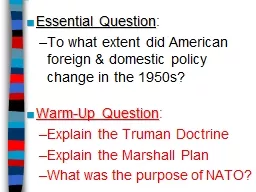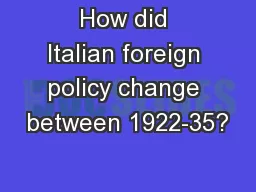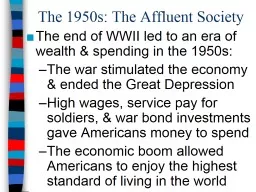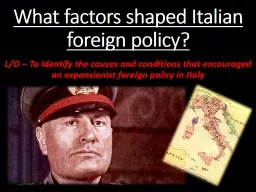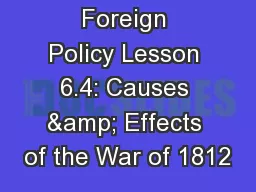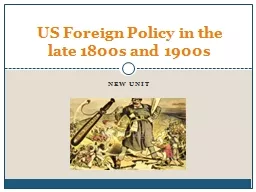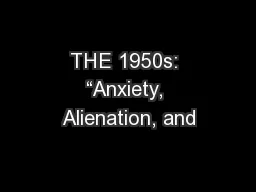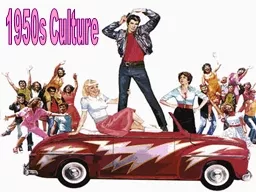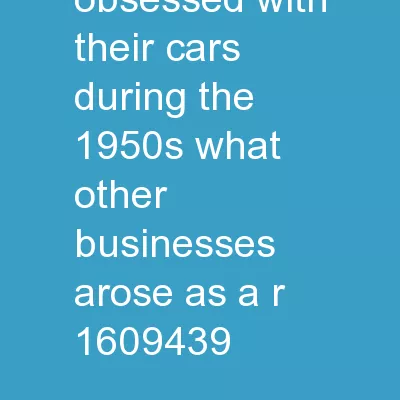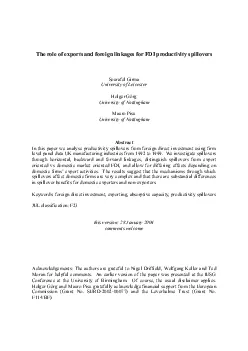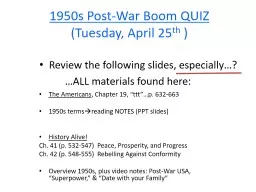PPT-Essential Question : To what extent did American foreign & domestic policy change
Author : karlyn-bohler | Published Date : 2018-09-24
WarmUp Question Explain the Truman Doctrine Explain the Marshall Plan What was the purpose of NATO President Eisenhowers Modern Republicanism Eisenhower Video
Presentation Embed Code
Download Presentation
Download Presentation The PPT/PDF document "Essential Question : To what extent did ..." is the property of its rightful owner. Permission is granted to download and print the materials on this website for personal, non-commercial use only, and to display it on your personal computer provided you do not modify the materials and that you retain all copyright notices contained in the materials. By downloading content from our website, you accept the terms of this agreement.
Essential Question : To what extent did American foreign & domestic policy change: Transcript
Download Rules Of Document
"Essential Question : To what extent did American foreign & domestic policy change"The content belongs to its owner. You may download and print it for personal use, without modification, and keep all copyright notices. By downloading, you agree to these terms.
Related Documents

